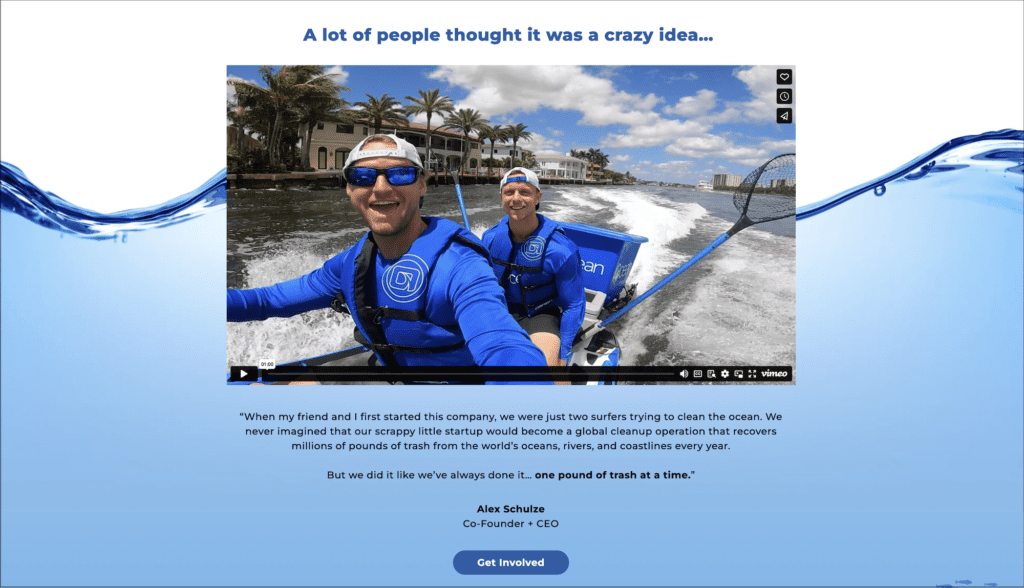So you want your business to have a positive impact. Bravo. How can you adapt your marketing strategy so that it reflects and actively supports your brand’s mission and purpose?
As with any marketing strategy, there is no one-size-fits-all formula. However, these 3 components are essential to any purpose-driven marketing strategy, as exemplified by these great brands that are making a difference
What is a Purpose-Driven Marketing Strategy?
Before diving into the components that make a successful purpose-driven marketing strategy, it’s essential to understand what it truly entails.
A purpose-driven marketing strategy is an approach where a brand aligns its marketing efforts with a cause or set of values that resonates deeply with its target audience. It goes beyond traditional marketing by focusing not only on selling products or services but also on creating a positive impact in the community or the world at large.
This strategy is rooted in the belief that businesses should serve a larger purpose, contributing to societal, environmental, or humanitarian goals. By doing so, companies not only foster a stronger connection with their consumers but also build a brand that’s seen as responsible, ethical, and genuinely committed to making a difference.
In a world where consumers are increasingly conscious of the ethics and values of the companies they support, a purpose-driven marketing strategy becomes not just a moral choice, but a business imperative.
In the rest of this blog post, we’ll explore the three key components that form the backbone of any effective purpose-driven marketing strategy.

1. Authentic Storytelling
At the heart of purpose-driven marketing strategy lies in authentic storytelling. This is more than a marketing tactic; it’s a way of expressing your brand’s core values and the “why” behind what you do. It involves sharing your brand’s journey, its values, and the “why” behind what you do.
A purpose-driven marketing strategy thrives on this authenticity. It’s not just about selling a product or service; it’s about connecting with your audience on an emotional level, building trust, and creating a community around shared values.
Brands like 4Ocean, which crafts bracelets and other products made from ocean trash, exemplify this by sharing their story on their Mission page, thus illustrating their commitment to ocean conservation.
How to Put Authentic Storytelling into Action for Your Business:
- Share Your Origin Story: Use your website, social media, or company blog to tell the story of how your business started. Highlight the challenges, motivations, and milestones.
- Customer Testimonials: Feature stories from satisfied customers who have benefitted from your products or services. This adds a personal touch and demonstrates real-world impact.
- Behind-the-Scenes Content: Give your audience a glimpse of your daily operations or the process of creating your products/services. This transparency builds trust and connection.
- Employee Spotlights: Share stories and experiences of your team members. This humanizes your brand and shows the people behind the products.
- Highlight Your Failures and Learnings: Be open about the hurdles and lessons learned along the way. It shows authenticity and that your business is committed to continuous improvement.

2. Community Engagement
Purpose-driven marketing is deeply rooted in engaging with the community. This engagement is a critical component of a purpose-driven marketing strategy, as it shows a brand’s commitment to its values beyond its products or services.
This could mean anything from supporting local initiatives to global causes that align with your brand’s mission. It’s about taking an active role in making a positive impact and showing your audience that you’re committed to more than just profits.
Watch the video above for a great example from TOMS, which collaborates with Homebody Industries to help provide mental health resources for their gang rehabilitation program.
How to Put Community Engagement into Action for Your Business:
- Partner with Local Organizations: Collaborate with local charities or community groups. Sponsor events or volunteer as a team to show your commitment to local causes.
- Host or Participate in Community Events: Organize or take part in community events that align with your brand values. This can be an excellent way to engage directly with your audience.
- Social Media Challenges for Good Causes: Launch challenges on social media where participation contributes to a good cause, like donations for every share or hashtag use.
- Customer-Involved Charity Initiatives: Create campaigns where customers can contribute to a cause with their purchases, such as donating a percentage of sales to a charity.
- Feedback and Community Input: Regularly seek feedback from your community on what causes they care about, and involve them in your decision-making process for social initiatives.

3. Mission-Centric Content
At the core of a purpose-driven marketing strategy is content that actively promotes and supports your mission. This involves crafting campaigns and sharing stories on social media and other channels that highlight the issues your business is passionate about.
Learn more: Purpose VS. Mission– What’s the Difference?
Whether it’s raising awareness about environmental concerns, social injustices, or community needs, using your marketing platforms to educate and inform creates a meaningful dialogue with your audience.
Shown above, Patagonia uses social media to drive public support for expanded protections for the Arctic National Wildlife Refuge.
How to Put Mission-Centric Content into Action for Your Business:
- Educational Blog Posts: Write articles that educate your audience about the issues your brand is passionate about. This not only informs but also shows your expertise and commitment.
- Social Media Campaigns: Create social media campaigns focusing on your mission. Use hashtags, compelling visuals, and stories to spread awareness and engage your audience.
- Collaborations with Influencers or Experts: Partner with influencers or experts who share your mission. Their endorsements can amplify your message and reach a wider audience.
- Interactive Webinars or Workshops: Host online events that discuss topics related to your mission. This can be a platform for educating and engaging with your audience in real-time.
- User-Generated Content: Encourage your customers to share their own stories or experiences related to your mission. This fosters a sense of community and broadens the conversation.
Harness the Power of a Purpose-Driven Marketing Strategy for Your Business
Integrating these timeless components into your marketing strategy not only aligns your brand with its core values, but also helps your brand stand out amongst competitors and resonate deeply with consumers who share similar ideals.
Browse our services or book a free consultation call so we can discuss what a strong purpose-driven marketing strategy could look like for your business.

 hire us
hire us